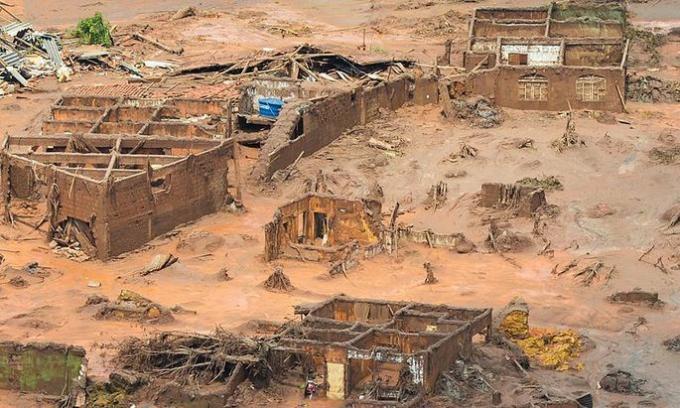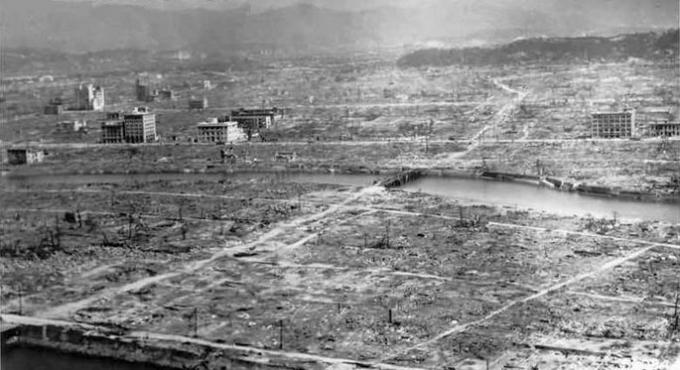What is an environmental disaster?
It is an event that causes a negative change in the environment, such as the destabilization of fauna and flora, the death and displacement of people.
Environmental disasters can either have natural origins or they can occur through human intervention.
Storms, earthquakes, hurricanes are examples of natural-caused environmental disasters.
On the other hand, oil spills at sea, nuclear accidents, dam failures are examples of human-caused environmental disasters.
Environmental disasters in Brazil
1. Accident with Cesium-137 (Goiânia, 1987)
On September 13, 1987, one of the biggest nuclear accidents in history began when two Scrap metal scavengers collected a radiotherapy device they found in a clinic disabled.
Containing highly radioactive material, the equipment caused the death of 4 people who had direct contact with it, including a 6-year-old girl.
Many people were contaminated, and after the accident, more than 100,000 were monitored.
Learn more at: Accident with cesium-137 in Goiânia: what happened and why it was so serious.
2. Oil spill in Guanabara Bay (Rio de Janeiro, 2000)
On January 18, 2000, a leak caused by the rupture of a Petrobras pipeline contaminated a large part of the Guanabara Bay ecosystem.
About 1.3 million liters of oil spread over an extension of 40 km² and caused one of the biggest environmental accidents in the country's history. Fishing activity was severely impaired.
3. Disruption of the dam in Mariana (Minas Gerais, 2015)
On November 5, 2015, Minas Gerais witnessed the collapse of a dam belonging to the Samarco mining company. In this disaster, approximately 60 million cubic meters of mining tailings were dumped, which is the residue from the mining activity.

In addition to 19 dead and several homeless, the tragedy affected the soil, making it infertile, polluting the waters and strongly damaging the aquatic ecosystem.
Learn more at Mariana disaster: environmental and human tragedy.
4. Disruption of the dam in Brumadinho (Minas Gerais, 2019)
On January 25, 2019, Minas was once again the scene of yet another environmental tragedy.
This time, 14 million cubic meters of mining tailings from mining company Vale claimed 252 deaths, in addition to contaminating the water and soil.
Environmental disasters in the world
1. Hiroshima Bomb (Japan, 1945)
On August 6, 1945, the first atomic bomb in history was dropped by the United States on Japan. The city of Hiroshima was destroyed and around 140,000 people died.
In addition to the deaths caused at the time of the explosion, thousands more people died, or were injured and blind, as a result of the contamination of water and soil.

Know more: Hiroshima Bomb
2. The Killing Mist, Big Smoke (London, 1952)
Between the 5th and 9th of December 1952, air pollution took hold of London, killing thousands of people.
Motivated by the cold, Londoners burned a lot of coal to keep warm, a situation that took uncontrollable proportions due to the quality of the charcoal used, since the good charcoal was exported.
It was the first time that an environmental tragedy caused health authorities to reflect on air pollution.
3. Chernobyl Accident (Ukraine, 1986)
On April 26, 1986, the biggest nuclear accident in history left several people dead and put thousands of people at risk after a reactor explosion.
The tragedy ended with the possibilities of cultivation in that region and caused genetic mutations in animals. Due to the risks, thousands of people had to be displaced from the city, which became a tourist attraction.
It is estimated that the site presents risks of contamination over the next 20,000 years.
Learn more at Chernobyl accident: summary and consequences.
4. Cyclone Idai (Mozambique, 2019)
On the night of March 14 to 15, 2019, tropical cyclone Idai caused a storm that left 500 dead in Mozambique.
The contaminated water caused cholera, in addition to which the floods destroyed the livelihoods of the inhabitants.
Causes and consequences of environmental disasters
Main causes:
- Carelessness about the environment;
- Logging;
- Economic goals.
Many environmental disasters result from lack of care for the environment. Tragedies caused by human action often result from economic goals, when profit takes precedence over environmental care.
Main consequences:
- Health and health problems;
- Fauna and flora destabilization;
- Displacement of people;
- Homeless people;
- Economic loss.
As a result of environmental disasters, people's health and safety are undermined because water and air pollution result in disease.
In some cases, the catastrophic situation leaves no alternative but to abandon the region victimized by the disaster, as happened in the Chernobyl accident.
However, although environmental disasters can be caused by economic objectives, a lot of money ends up being spent trying to restore living conditions after a disaster.
This is what happens when there is a need to build houses after earthquakes, or when there is damage in the tourism sector due to the oil slicks that hit the beaches, which ends up generating unemployment.
If you want to know more:
- Natural disasters
- The main environmental disasters in Brazil


